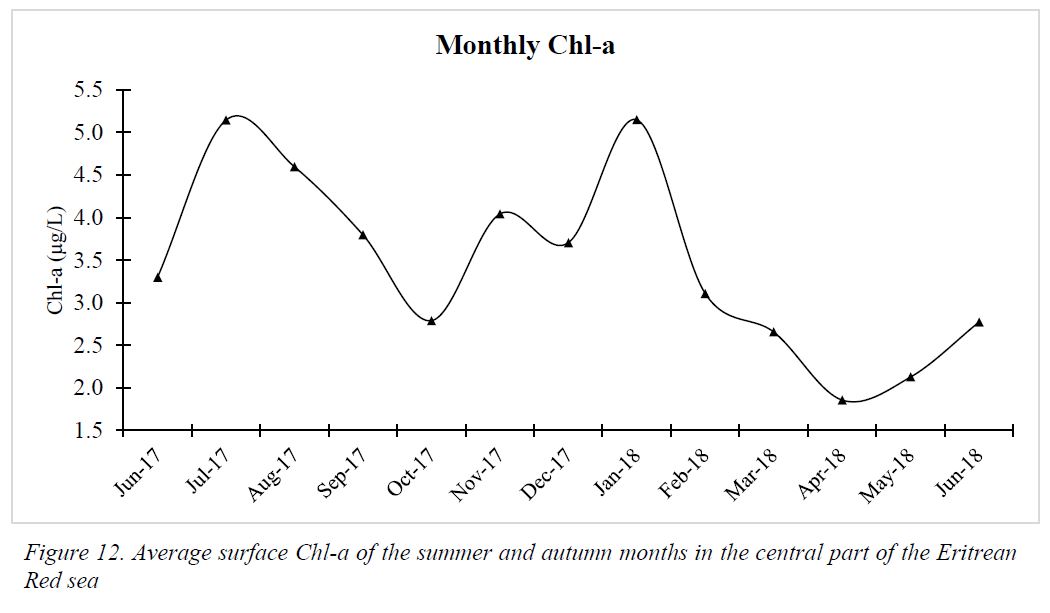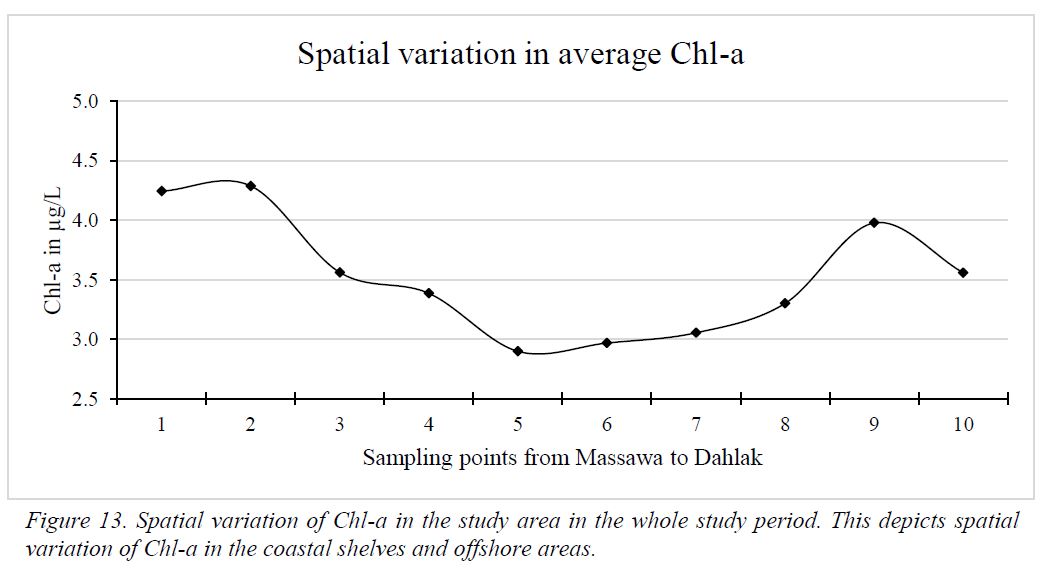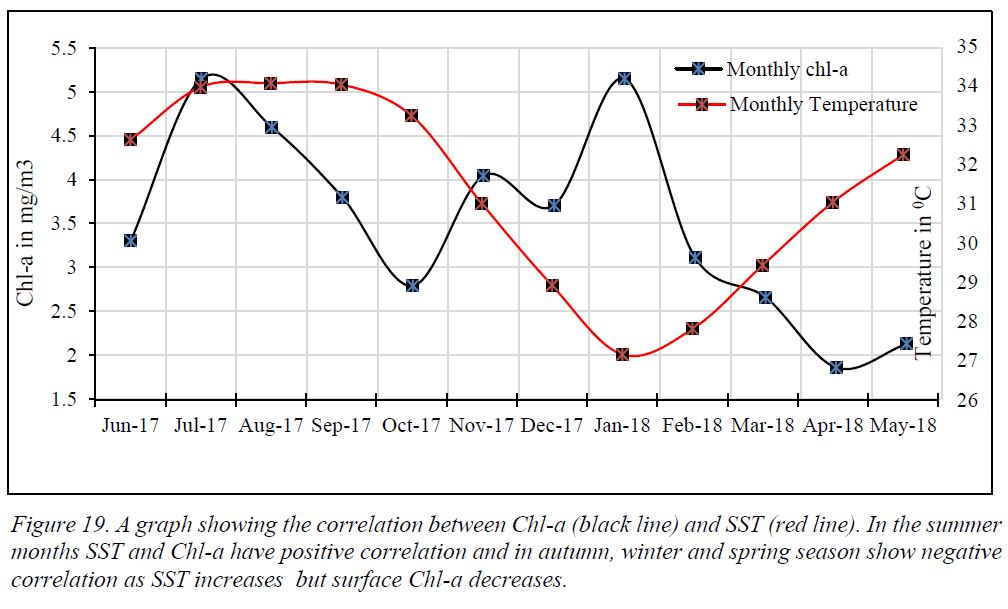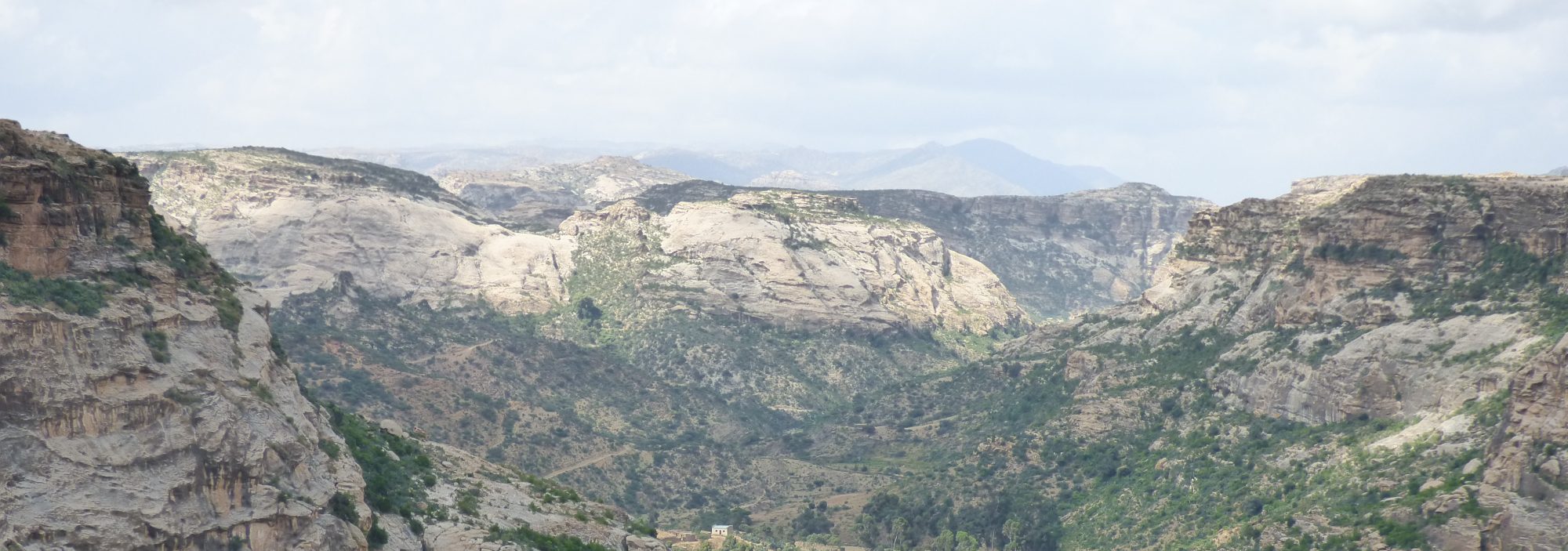Hadgu Eyesab: Spatial and seasonal variability of phytoplankton concentration in the territorial waters of Eritrean Red Sea.
Abstract
Tropical water bodies, such as the Red Sea, are one of the warmest, most saline, and less fertile in the world. This is mainly because the Red Sea is semi-enclosed geographic basin and it receives no permanent river discharge and less rain fall, and thus evaporation exceeds precipitation. The southern Red Sea and the Eritrean territorial waters remain less studied and the existing literatures provide little information regarding phytoplankton distribution and oceanographic factors influencing primary productivity.
The purpose of the present study is therefore, to investigate the monthly and spatial variation of surface chlorophyll-a (Chl-a) concentration in the southern Red Sea along the shallow continental shelves of Eritrea. The second goal is to assess Sea Surface Temperature (SST) which is believed to be a proxy of nutrient availability (Raitsos et al., 2013) in the tropical waters including the Red Sea.
In this study the in-situ and satellite data of Chl-a and SST are used to explain the process. Chl-a is extracted from phytoplankton cells using a 90% solution of acetone. Then the extract is analyzed on a spectrophotometer, to determine Chl-a concentration. The in-situ data are used for validation, alternative explanation and comparison to the satellite imagery data. The daily surface Chl-a data are acquired from ESA—OC-CCI ocean color website and the weekly (8day) SST are collected from MODIS on-board the Aqua platform Imaging Spectroradiometer from Ocean color website of NASA.
The data is analyzed using R-studio, QGIS, HOBOware Pro softwares and Microsoft excel. The analysis of the remote sensing (RS) and the in-situ data show that the southern Red Sea and Eritrean Territorial waters have high surface Chl-a in the summer (hot season) and winter (cold season) about ≈4.2μg/L and ≈3.6μg/L, respectively and show lower magnitude in Autumn and Spring seasons (≈3.5 μg/L and ≈2.2μg/L) respectively, during which time reversal of the direction of the monsoon winds takes place before they are fully matured to either direction.
The SST in-situ measurement reveals high in the summer (340C) and lower in winter (27.60C). In the summer months, both Chl-a and SST show high magnitude unlike what is believed in the tropical waters, that is, both these parameter are inversely related. Therefor the southern Red Sea is ventilated by advection (horizontal movement) from the Gulf of Aden (GOA) by the effect of monsoon winds dissimilar to the tropical waters of its counterpart which is refreshed by convective overturning (vertical movement).
The results found from the analysis of spatial patterns indicate that, the northern part of the Eritrean territory has lower Chl-a (0.7mg/m3) than the central (2mg/m3) and southern regions (2.75mg/m3) during the study period.




